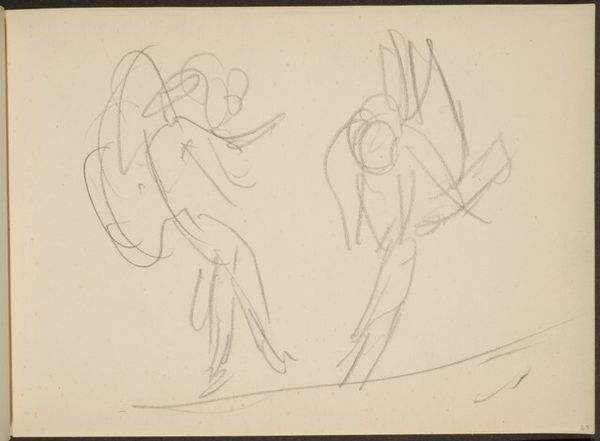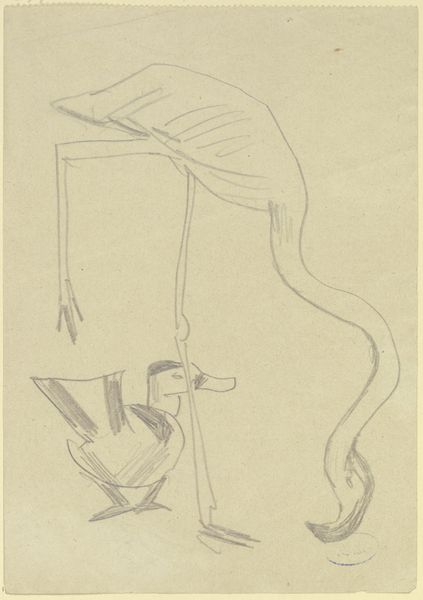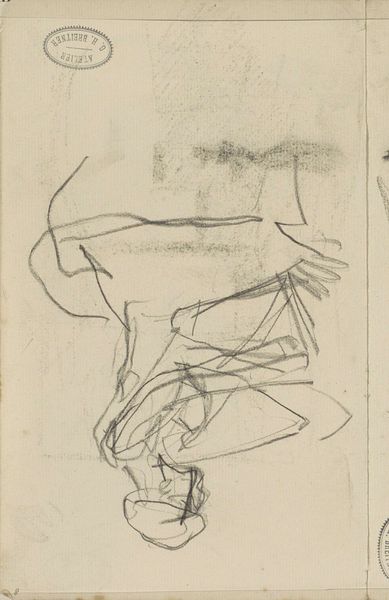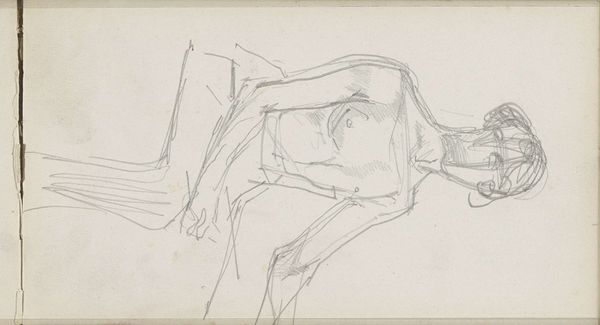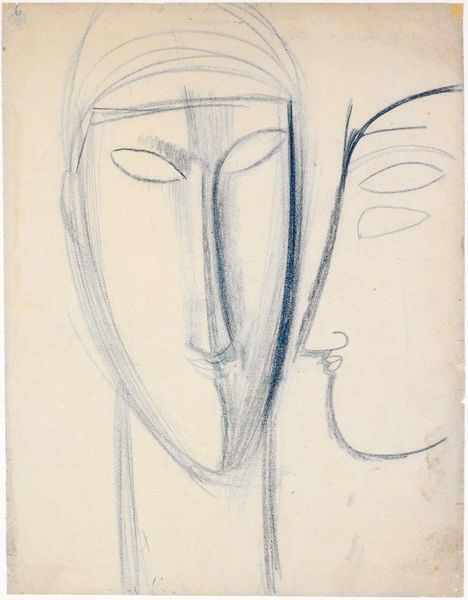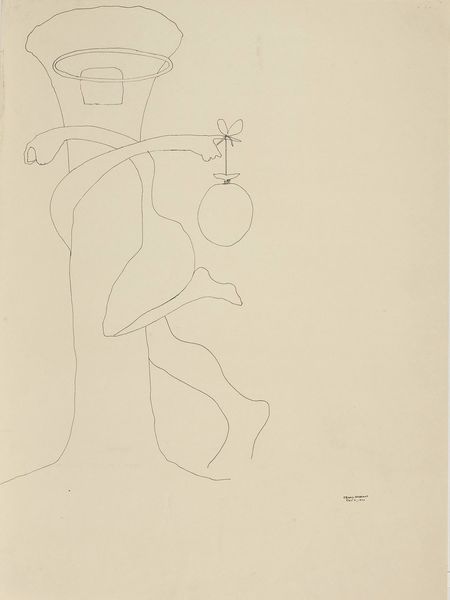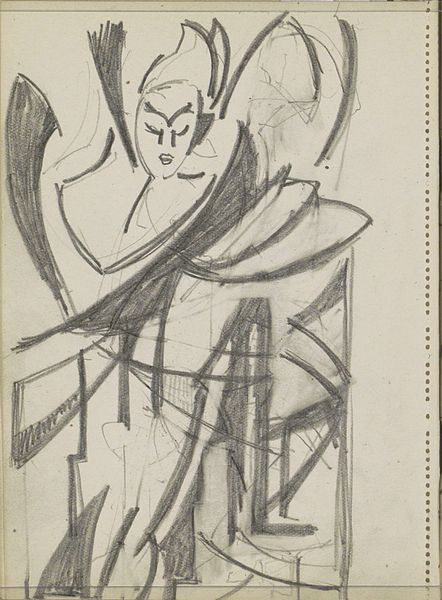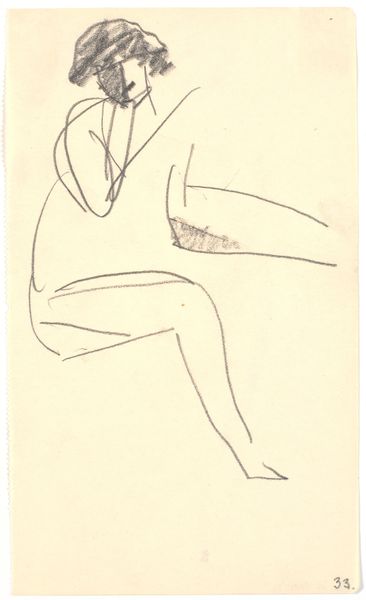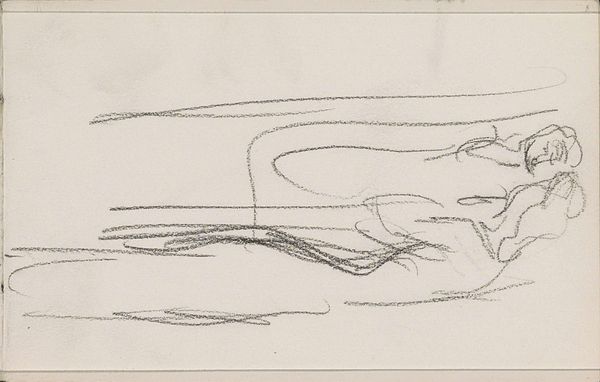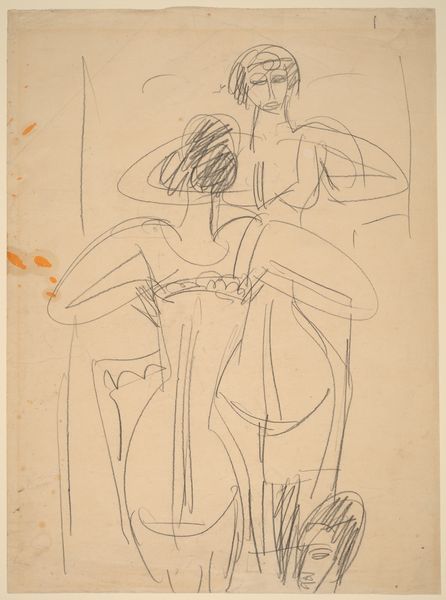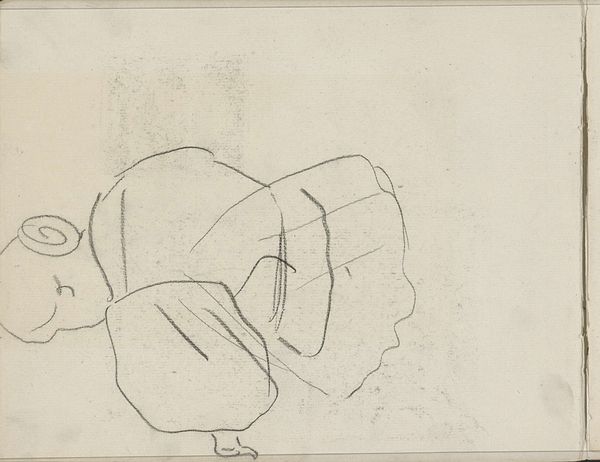
Copyright: Public Domain: Artvee
Curator: The stark simplicity of this work, almost childlike, is striking. Editor: Agreed. There's an unsettling quietness to it. Paul Klee executed this drawing, entitled "Im Zeichen Der Teilung," or "In the Sign of Division," in 1940, employing graphite on paper. Curator: Yes, the medium underscores the directness of Klee’s vision. The crude application, the elemental form; consider the stark semiotic contrast between the perfect circle of the head, with its primal “eyes” of internal symbols, and the crude legs. It speaks of something divided. Editor: The means of production also hint at its context. 1940 – Klee, already suffering from scleroderma, was also witnessing the rise of Nazism. This starkness, achieved with minimal material investment, points towards a potential scarcity, a rationing of resources mirrored perhaps in the emotional or spiritual landscape. Curator: A poignant reading. Look at how the line is deployed— economical, yet expressive. It’s abstraction striving to evoke a fractured whole. A totality rendered unstable. Editor: The paper itself—likely a commonplace stock – grounds the image. The graphite, a humble material, made this image. Was it an act of defiance, perhaps, finding a way to express the unspeakable through the most basic of means? There is no extravagance of materials. It is pure economy, in labor, in matter, in form. Curator: Perhaps. Though I would emphasize how even these simple lines build formal tension and a palpable anxiety in the viewer. It seems like something teetering, doesn’t it? Almost falling off the page into oblivion. Editor: Yes, an object lesson on using limited resources. A quiet testament to the capacity for creation amidst a climate of destruction, relying only on available resources. A visual reduction of terrible things. Curator: In considering how it succeeds in creating something so elemental, we recognize an image rife with starkly effective formal juxtapositions and expressions of turmoil. Editor: Right. Its visual austerity challenges the opulence of the rising political regime that sought to destroy such expressions. The drawing resists obliteration in its humble, tenacious way.
Comments
No comments
Be the first to comment and join the conversation on the ultimate creative platform.
